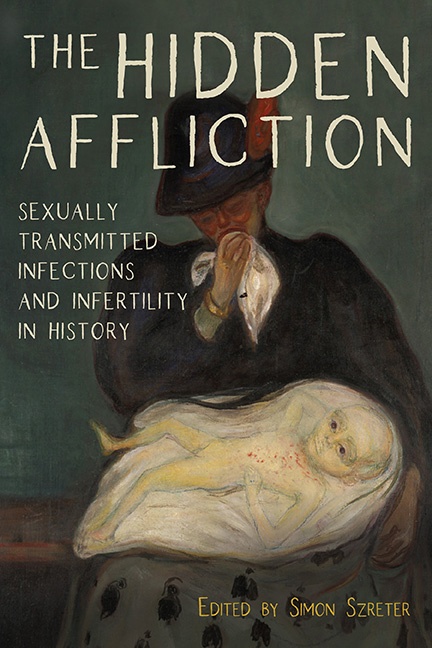Book contents
- Frontmatter
- Contents
- Acknowledgments
- Introduction
- Part One The Hidden Pitfalls in the Early Documentary Record
- Part Two The Biomedical Sciences and the History of the STI Microorganisms
- Part Three Population Decline in the Global South
- Part Four Infertility and the Specter of Venereal Diseases in Modern Europe
- List of Contributors
- Index
Introduction
Published online by Cambridge University Press: 25 March 2020
- Frontmatter
- Contents
- Acknowledgments
- Introduction
- Part One The Hidden Pitfalls in the Early Documentary Record
- Part Two The Biomedical Sciences and the History of the STI Microorganisms
- Part Three Population Decline in the Global South
- Part Four Infertility and the Specter of Venereal Diseases in Modern Europe
- List of Contributors
- Index
Summary
“A Riddle, Wrapped in a Mystery, inside an Enigma”
This volume is a necessarily multidisciplinary collection dedicated to the extremely difficult task of uncovering and exploring what can be reconstructed of the dimensions and the scale of the historical impact of sexually transmitted infections (STIs) on human infertility. As a subject for inquiry, this comes close to Winston Churchill's celebrated phrase, “a riddle, wrapped in a mystery, inside an enigma.” The riddle, which remains for medical and epidemiological science today, is how to quantify just how much the different STI organisms have affected female and male infertility. The mystery is how to find sufficient evidence to reveal how far different populations in the past were afflicted by these potentially sterilizing social diseases. The enigma is the question of whether any of the STIs have afflicted human populations from time immemorial, or whether there is evidence of more specific dating of the emergence of any STIs in historical, archaeological, or biogenomic records and, if so, when? The pandemic of HIV/AIDS in the late twentieth century demonstrated unequivocally not only that STDs are culturally refracted and technologically defined, which we already knew, but also that the infective microorganisms—being socially constructed through human activity—can themselves have a history and a potentially discoverable origin date in their entry into their human hosts. Therefore, there is a meaningful historical debate to be had over their origins.
Owing to the conjectural state of both scientific and historical knowledge in all three of these areas—the riddle, the mystery, and the enigma—for us to make intellectual progress with uncovering the infertility implications of the historical STIs, The Hidden Affliction is burdened with simultaneously pursuing several related but distinct tasks—none of them easy. In particular, the study of venereal syphilis, caused by Treponema pallidum (subspecies pallidum), and its contested history has an important part to play in this volume. Syphilis does not directly cause an incapacity to conceive, as gonorrhea and chlamydia both do, though it can certainly result in effective infertility for individual women due to fetal morbidity, multiple miscarriages, and early infant mortality, as chapter 9 harrowingly demonstrates.
- Type
- Chapter
- Information
- The Hidden AfflictionSexually Transmitted Infections and Infertility in History, pp. 1 - 40Publisher: Boydell & BrewerPrint publication year: 2019

